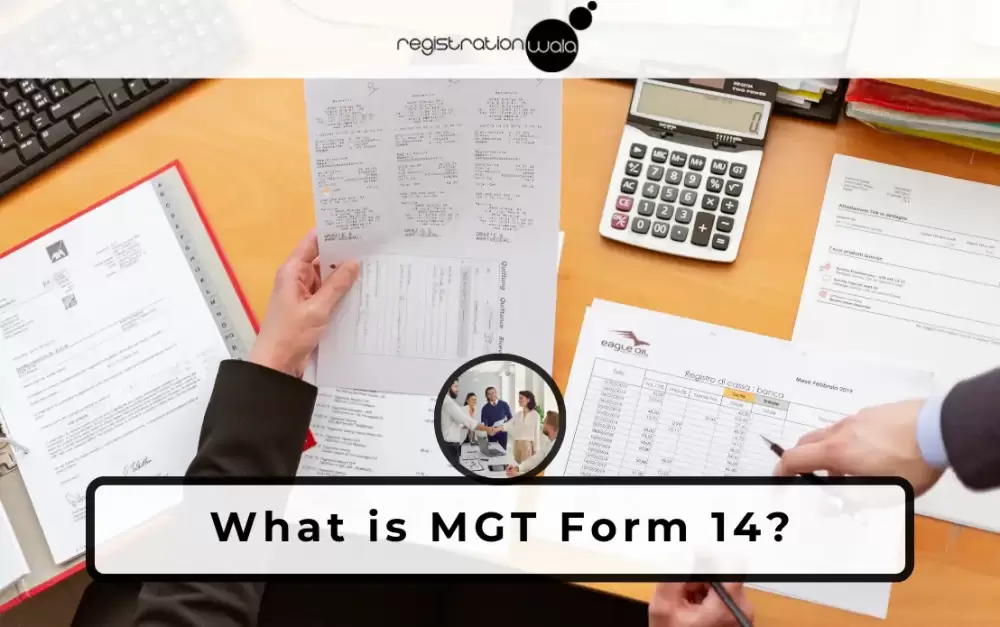
Get a Quote
Get a Quote and Find Services to Fit Your Needs 50000+ Satisfied Clients
5000+ Licenses & Registration
15 Branches across India
75 Years + Combined experience


Explore the history of the classic Lorem Ipsum passage and generate your own text using any number of characters, words, sentences or paragraphs.
Board meetings are an important part of every organisation and the decisions made in the meetings set the tone for future decisions. To make these meetings more transparent, the government introduced the Form MGT-14 under the Companies Act, 2013. The form documents all the decisions made in the meeting and submit it to the Registrar of Companies (RoC). Below we shared which types of resolutions you should file to the RoC and what are the consequences if you fail. Check to get complete information on the MGT 14 Form/
As per Section 117(3) of the Companies Act, 2013, a copy of each agreement signed, explanatory statement and resolution adopted must be submitted to the Registrar of Companies. This must be submitted within 30 days of the passage with the payment.
For this solution, Form MGT-14 was created to offer a structure for Directors to file resolutions made in different Board Meetings. Here, the MGT 14 form should be filed with the Registrar of Companies (RoC) in accordance with sections 94(1) and 117(1) and rules made thereunder.
Remember, the private companies are exempted from filing the Board Resolutions. So, private companies are not required to file MGT-14 for the matters those are specified in Section 179(3) of the Companies Act 2013. Also, they do not have to file e-form MGT-14 with the RoC on the exercise of powers of the Board under the provisions of Section 179(3) of the Companies Act 2013.
The Form MGT-14 is used to file resolutions made by the shareholders, directors, and creditors during various board meetings. These resolutions must be submitted to the Registrar of Companies (RoC) in India by the company or liquidator using E-Form MGT-14. So, the purpose of filing these resolutions and agreements to the RoC is to register the decisions and agreements made in these meetings.
Also, during board meetings, all the decisions that are made by the shareholders, directors, and creditors, when collection are passed as resolutions. However, the company or liquidator have to file these resolutions to the ROC, and for that, they should choose Form MGT-14.
In the Companies Act of 2013, Form MGT 14 was created with the goal of submitting certain decisions/resolutions of the firm to the ROC. Below are different types of resolutions that are submitted through Form MGT 14. So, all the resolutions are as follows:
The approval of ordinary resolution gets done by a simple majority. Also, it must receive more votes in favour than against, including the chairman's optional casting vote. Voting is conducted through a show of hands or a poll. This is done when the meeting was scheduled with the notice of less than 21 days. So, the Ordinary resolutions include the following:
Information on the public deposits that are accepted.
Participation in any meeting of creditors.
The company must modify its name after receiving advice from the Central Government if the name or trademark is too similar to an already existing company name or registered trademark.
Removal of director before the end of their term in office.
Corporate representation at company meetings.
Dissolution after taking the Company Liquidator’s report into account.
Any person, besides a retiring auditor, can nominate a statutory auditor.
A managing director/full-time director/manager has been appointed.
Allowing the company’s director, holding, subsidiary, or associate company to participate in non-cash activities.
The voluntary dissolution of the company due to the expiry of its term or the happening of any event for which the rules provide for the dissolution of the company.
The special resolution is the one which gets approval from 75% of the members present in the meeting. This means that the decision should have voted in favour three times higher than the votes against. The voting can be done by show of hands, in-person vote, or proxy vote. In the notice of the general meeting, it must be cleared that the resolution will be passed as a special resolution. So, the other matters that must be included in the resolution are as follows:
Insertion of a provision of entrenchment in Articles of Association by companies.
Change of a registered office from one city to another in the same state.
Alteration of Memorandum of Association.
Change in the object in case the money raised is unutilised.
Alteration of Articles of Association.
Variation in terms of a contract or objects in the prospectus.
Issue of the depository receipts in any of the foreign countries.
Variation of shareholder rights.
Issue of sweat equity shares and issue of employee stock options.
A private offer of securities.
Issue of debentures or loans containing an option for conversion to shares.
Reduction of share capital.
Purchase/subscription of fully paid shares for the benefit of employees and buyback of shares.
Keeping registers at any other place in India other than the registered office.
Removal of auditor before the expiry of the term.
Appointment of more than 15 directors and reappointment of Independent Director.
Restricting the number of directorships of a director.
Provide time for the repayment of debt due from a director.
Scheme for providing loans to directors.
Appointment of a director, i.e. a managing director/whole-time director/manager above the age of 70 years.
The affairs of the company ought to be investigated.
Application to the registrar for removal of name from the register.
The authorisation of securities buy-back included in Section 68 of the Companies Act, 2013, will include in the Board resolution. Additionally, the following matters should also be addressed:
Inspection of the books of accounts as well as the other records of the subsidiary.
Authorisation for making political contributions.
Making an investment or giving of loan/guarantee/security by the company.
Related party transaction contract/agreement.
Appointment of a whole-time key managerial personnel of a company.
Appointment of a person as managing director if he is the manager/managing director of another company.
Approval of self-prospectus.
Appointing/ re-appointing/renewing of appointment/variation of the terms of appointment, of a managing director.
Calling of the unpaid amount on the shares from the shareholders.
Authorisation of buy-back of securities as provided under Section 68.
Issuing securities (including debentures) in India/outside India.
Approval of the Board’s report and financial statements.
To diversify the business of the company and approve amalgamation, merger or reconstruction.
Taking over a firm or acquiring the controlling stake in another firm.
In case, the firm fails to file the resolution or the agreement under sub-section (1) of Section 117 as per the expiry period mentioned under Section 403 with additional fees. The penalty mentioned is as follows:
Penalty to Company: Amount Rs. 1 lakh and in case of the failure continues after the first one then Rs.500 will be charged for every day. The maximum penalty amount is Rs. 25 lakhs.
Penalty to Officer (including the liquidator of the company): The minimum penalty amount is Rs 50,000. In case the failure continues after the first one then Rs 500 will be charged for each day. The maximum penalty amount is Rs 5 lakh.
If the firm fails to file the MGT 14 Form, this form requires details of the SRN of INC-28 and INC-28. This can be filed after receiving an order of condonation, the power of condonation is provided by the Ministry of Corporate Affairs. So, below are the steps that should be followed for the condonation of delay.
The company is required to submit form CG-1 to MCA.
MCA will impose a penalty in the order and the company have to pay the complete payment of such penalty.
Once the payment is received, the company have to file a copy of the order and penalty receipt in form INC-28 with ROC.
Last, the company can file the e-form MGT-14 by including the SRN of INC-28.
To conclude, the resolution of every board meeting of the company must be submitted to the RoC through Form MGT 14. There are three types of resolutions which required to be filed to avoid any kind of penalty. Also, remember the must be submitted within 30 days of resolution approval or agreement. So, through Form MGT 14, the important resolutions of the company’s meetings can be properly documented, and this promotes transparency and accountability in corporate decision-making.

Hey there, I'm Dushyant Sharma. With the extensive knowledge I've gained in past 8 years, I have been creating content on various subjects such as banking, insurance, telecom, and all the important registration and licensing processes for various companies. I'm here to help everyone with my expertise in these areas through my articles.

